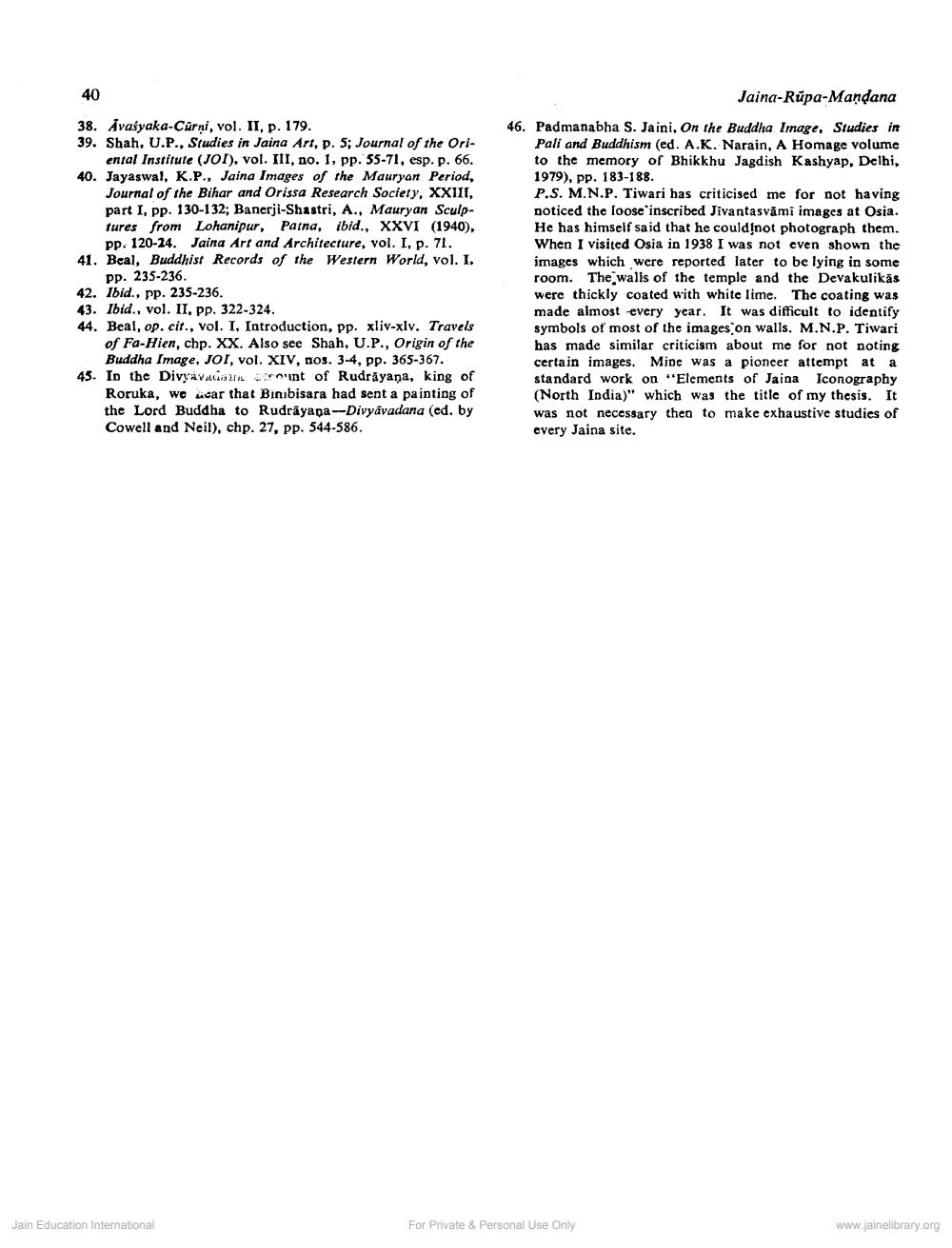________________
40 38. Avašyaka-Curni, vol. II, p. 179. 39. Shah, U.P., Studies in Jaina Art, p. 5; Journal of the Ori
ental Institute (JOI), vol. III, no. 1, pp. 55-71, esp. p. 66. 40. Jayaswal, K.P., Jaina Images of the Mauryan Period,
Journal of the Bihar and Orissa Research Society, XXIII, part I, pp. 130-132; Banerji-Shastri, A., Mauryan Sculptures from Lohanipur, Patna, ibid., XXVI (1940),
pp. 120-24. Jaina Art and Architecture, vol. I, p. 71. 41. Beal, Buddhist Records of the Western World, vol. I,
pp. 235-236. 42. Ibid., pp. 235-236. 43. Ibid., vol. II, pp. 322-324. 44. Beal, op. cit., vol. I, Introduction, pp. xliv-xlv. Travels
of Fa-Hien, chp. XX. Also see Shah, U.P., Origin of the
Buddha Image, JOI, vol. XIV, nos. 3-4, pp. 365-367. 45. In the Divyávalia orniint of Rudrāyana, king of
Roruka, we wcar that Binibisara had sent a painting of the Lord Buddha to Rudrāyana-Divyāvadana (ed. by Cowell and Neil), chp. 27, pp. 544-586.
Jaina-Rupa-Mandana 46. Padmanabha S. Jaini, On the Buddha Image, Studies in
Pali and Buddhism (ed. A.K. Narain, A Homage volume to the memory of Bhikkhu Jagdish Kashyap, Delhi, 1979), pp. 183-188. P.S. M.N.P. Tiwari has criticised me for not having noticed the loose inscribed Jivantasvămi images at Osia. He has himself said that he couldụnot photograph them. When I visited Osia in 1938 I was not even shown the images which were reported later to be lying in some room. The walls of the temple and the Devakulikās were thickly coated with white lime. The coating was made almost every year. It was difficult to identify symbols of most of the images on walls. M.N.P. Tiwari has made similar criticism about me for not noting certain images. Mine was a pioneer attempt at a standard work on "Elements of Jaina Iconography (North India)" which was the title of my thesis. It was not necessary then to make exhaustive studies of every Jaina site.
Jain Education International
For Private & Personal Use Only
www.jainelibrary.org




